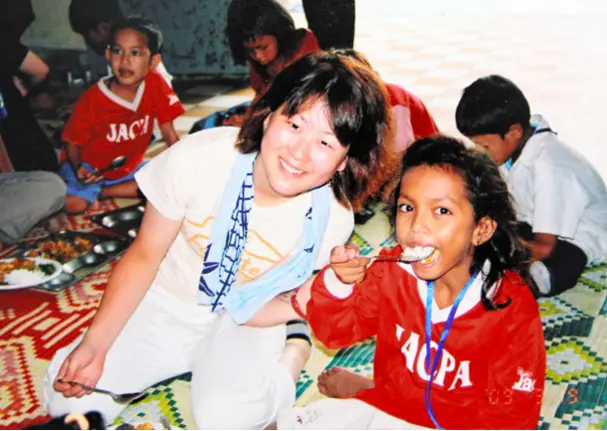Rui Shimodaira spent her life helping others, but at the age of 27 it was cut short by the terrorist outrage in Bangladesh.
Shimodaira was the youngest of the seven Japanese victims killed in the attack staged July 1 at an upscale restaurant in Dhaka, the capital.
Like the other Japanese working in Bangladesh, a developing country perched atop the Bay of Bengal, Shimodaira was trying to make a difference. It was a path she had followed since college.
“We have no idea why she had to die in this senseless manner and on whom we can vent our anger” said a statement issued by her family in Fujimi, Saitama Prefecture. “The Japanese victims all toiled every day for the sake of the prosperity of Bangladesh. We are proud of our daughter who did her best to contribute, no matter how small, with a sense of mission. She must be so sorry to have met such an untimely end without fulfilling her life's work.”
The family members returned to Japan from Bangladesh on July 5 after identifying her body. The statement was released via the prefectural police.
Shimodaira was in Bangladesh on assignment from Almec Corp., a Tokyo-based consultancy in infrastructure projects, which she joined in 2014 after doing a graduate course at the Tokyo Institute of Technology.
Friends and family members recalled her burning desire to help people in need even while she was in college.
In March 2009, during her sophomore year, she spent three weeks in Cambodia, where she helped make a swing to present to a local elementary school, according to the Japan Team of Young Human Power, a Tokyo nonprofit organization offering educational assistance to developing countries. During her visit, she led a team of volunteers who performed a Japanese folk dance for the children.
“While she diligently proceeded with her assignment, she was also a natural leader who could steer her colleagues,” said Masayoshi Kiyokuni, who headed the organization’s secretariat.
When Kiyokuni, 45, was reunited with her in Bangkok last November, Shimodaira told him she intended to continue working to help the needy in poor countries.
Kiyokuni said it seemed that she had many projects in mind to pursue in the future.
“We are determined to carry out our aid activities, with Shimodaira serving as our inspiration,” he said.
Although her primary focus was helping people in developing countries, Shimodaira never forgot her roots in Japan.
After the Tohoku region was devastated by a magnitude-9.0 earthquake and towering tsunami in March 2011, she visited Minami-Sanriku, a badly battered town in Miyagi Prefecture, to clean mud-smeared photographs after the debris was cleared.
The oldest of the Japanese victims was 80-year-old Hiroshi Tanaka, a resident of Yokohama who was sent to Bangladesh as part of a project by Tokyo-based Oriental Consultants Global Co. Like his 65-year-old colleague Hideki Hashimoto of Funabashi, Chiba Prefecture, he spent his career in the railway industry.
Tanaka worked as a technician for the Japanese National Railways before it was privatized.
Tanaka's 73-year-old wife said in a statement released by her lawyer on July 5: “My husband was curious and had a positive view of life. His death is a great shock as I was expecting him to return home this weekend.”
Hashimoto went to Bangladesh as a consultant specializing in railroad construction and the development of a commercial complex underneath elevated railway tracks. He had previously worked on the Tohoku Shinkansen bullet train project while working for JNR.
(THE ASAHI SHIMBUN)
 简体中文
简体中文




